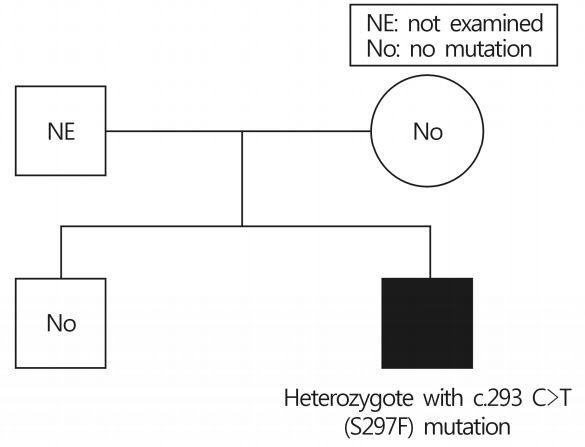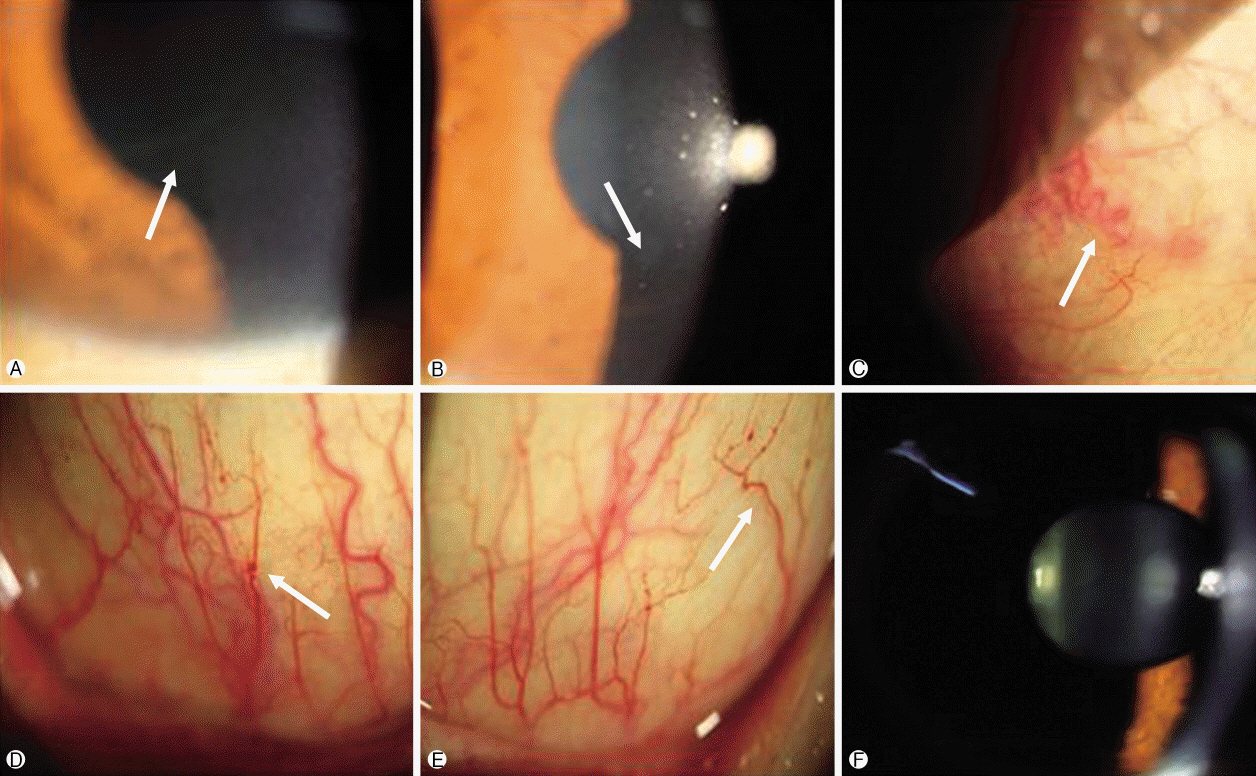Yeungnam Univ J Med.
2018 Dec;35(2):232-235. 10.12701/yujm.2018.35.2.232.
Ocular manifestations in a patient with de novo Fabry disease
- Affiliations
-
- 1Department of Ophthalmology, Keimyung University School of Medicine, Daegu, Korea. eyedr@dsmc.or.kr
- 2Department of Internal Medicine, Keimyung University School of Medicine, Daegu, Korea.
- KMID: 2433745
- DOI: http://doi.org/10.12701/yujm.2018.35.2.232
Abstract
- Fabry disease (FD) is an X-linked, recessively inherited, rare, progressive, disorder of glycosphingolipid metabolism affecting multiple organs resulting in organ dysfunction. It is rare to find only one FD affected subject with a de novo mutation. Here we report a case of a 41-year-old Asian male diagnosed with de novo FD. Comprehensive ophthalmological evaluation was performed using slit lamp, color fundus photography, optical coherence tomography, fluorescein angiography, and indocyanine green angiography. On slit lamp examination, cornea verticillata and slightly tortuous, and aneurysmal dilatation of inferior bulbar conjunctival vessels were observed. Other imaging modalities showed unremarkable findings. Cornea verticillata and inferior bulbar conjunctival vascular abnormalities may be detected earlier than other ocular abnormalities in de novo FDs like hereditary FDs.
Keyword
MeSH Terms
Figure
Reference
-
1. Terryn W, Cochat P, Froissart R, Ortiz A, Pirson Y, Poppe B, et al. Fabry nephropathy: indications for screening and guidance for diagnosis and treatment by the European Renal Best Practice. Nephrol Dial Transplant. 2013; 28:505–17.
Article2. Pisani A, Visciano B, Roux GD, Sabbatini M, Porto C, Parenti G, et al. Enzyme replacement therapy in patients with Fabry disease: state of the art and review of the literature. Mol Genet Metab. 2012; 107:267–75.
Article3. Iemolo F, Pizzo F, Albeggiani G, Zizzo C, Colomba P, Scalia S, et al. De novo mutation in a male patient with Fabry disease: a case report. BMC Res Notes. 2014; 7:11.
Article4. Samiy N. Ocular features of Fabry disease: diagnosis of a treatable life-threatening disorder. Surv Ophthalmol. 2008; 53:416–23.
Article5. Sher NA, Letson RD, Desnick RJ. The ocular manifestations in Fabry’s disease. Arch Ophthalmol. 1979; 97:671–6.
Article6. Lee HG, Kim MJ, Choi CY, Tchah H. Fabry disease in a family: four patients and five carriers. J Korean Ophthalmol Soc. 2006; 47:1496–501. Korean.7. Pisani A, Daniele A, Di Domenico C, Nigro E, Salvatore F, Riccio E. Late diagnosis of Fabry disease caused by a de novo mutation in a patient with end stage renal disease. BMC Res Notes. 2015; 8:711.
Article8. Branton MH, Schiffmann R, Sabnis SG, Murray GJ, Quirk JM, Altarescu G, et al. Natural history of Fabry renal disease: influence of alpha-galactosidase A activity and genetic mutations on clinical course. Medicine (Baltimore). 2002; 81:122–38.
- Full Text Links
- Actions
-
Cited
- CITED
-
- Close
- Share
- Similar articles
-
- Fabry Disease in a Family: Four Patients and Five Carriers
- A Novel Frameshift Mutation of Galactosidase-alpha in Fabry Disease Restricted to Dermatologic Manifestations
- A Case of Cerebral Aneurysmal Subarachnoid Hemorrhage in Fabry's Disease
- Rupture of De Novo Anterior Communicating Artery Aneurysm 8 Days after the Clipping of Ruptured Middle Cerebral Artery Aneurysm
- De novo gastric cancer after liver transplantation: A review of the Asian experience




